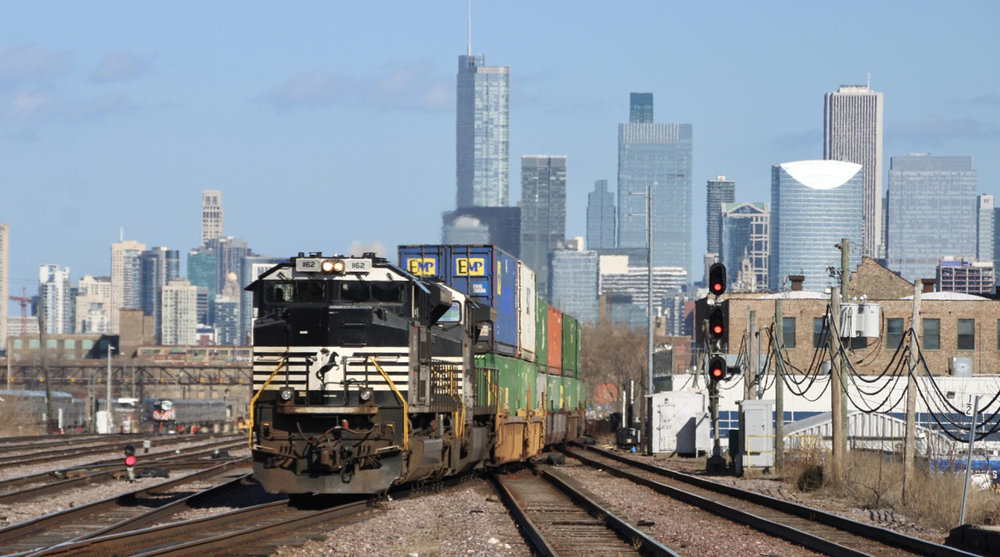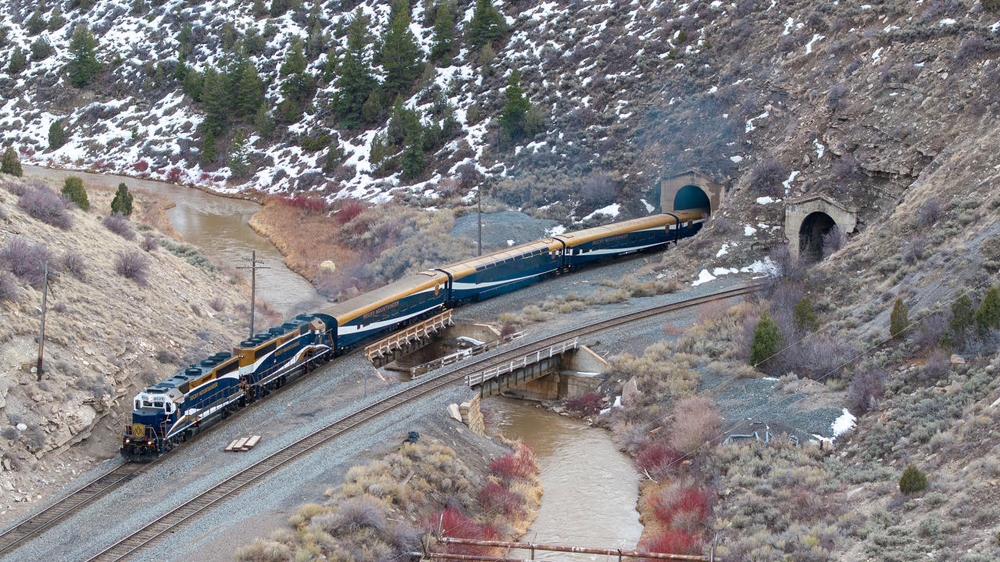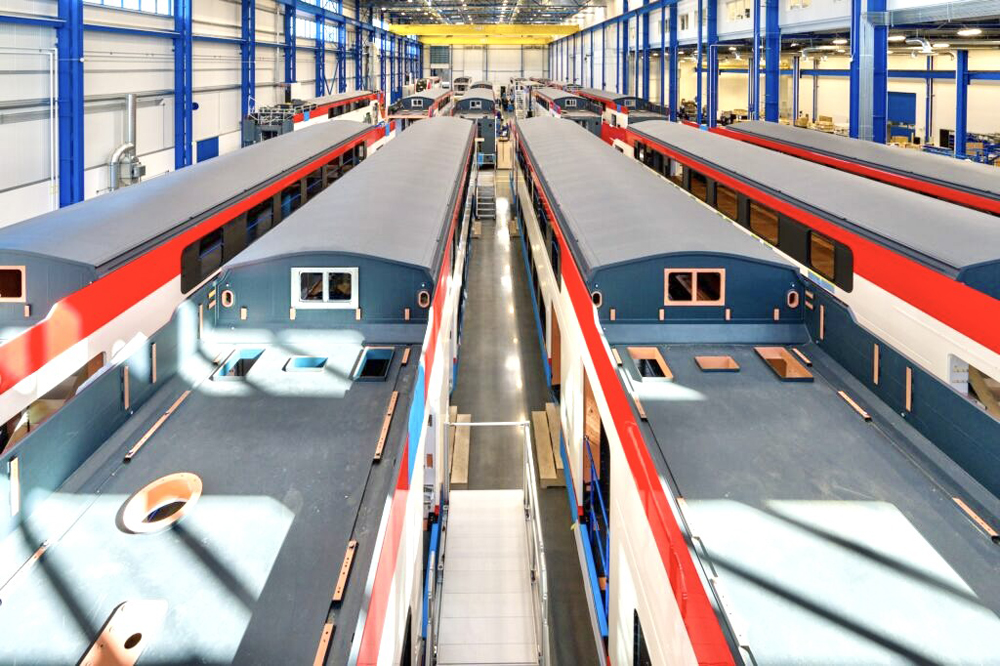Vital statistics
7⁄8″ scale, gauge 1, live-steam 0-4-2T locomotive
Accucraft Trains
33268 Central Avenue
Union City CA 94587
Price: $2,200
Website: www.accucraft.com
Gauge 1, 7⁄8″ scale (1:13.7) model of a Baldwin 0-4-2T locomotive; live-steam operation; all-metal construction; butane fired; single-flue copper boiler; fittings include safety valve, check valve, water glass, pressure gauge, filler plug; working cylinder drain cocks; blow-off pressure, 60 psi; hand pump in bunker; fully sprung; reversing from the cab via Stephenson’s valve gear between the frames; minimum radius, 48″. Dimensions: length, 13.6″; width, 5.6″, height, 7.5″. In 7/8″ scale, this works out to 15’6″ x 6’5″ x 8’7″, respectively.Weight: 12 lb.
Pros: Beautiful locomotive; excellent replica of prototype; excellent paint and graphics; high level of sophistication; good instruction manual; easy access to control; can be kept in steam indefinitely
Cons: Smokebox-door latch loose; rear end too heavy; toy-type safety valve; roof hinge interferes with gas filler.
Fairymead is a tiny, Baldwin-built locomotive, one of the company’s many “catalog” engines designed for various industrial uses and exported to points all around the world. This particular locomotive was ordered by the Fairymead Sugar Mill in Queens–land, Australia in 1889 and delivered the following year for use on their 2′-gauge sugar railroad. Two additional nearly identical engines were subsequently ordered by the company. The two later locomotives were scrapped in 1957 after long service lives but Fairymead survived into preservation and is running today.
Accucraft has produced a beautiful replica of this locomotive in 7/8″ scale. This makes gauge-1 track the correct gauge (two feet) for the engine. Although more-or-less ready to run, there is a little assembly involved. The smoke stack and dummy headlight must be installed, as must the dummy safety valves and whistle atop the steam dome (be careful with these—the castings are a little fragile). Also the “chuff pipe” (so called in the manual but actually just an exhaust pipe) must be screwed into place in the exhaust line. These are fiddly jobs but are well covered in the supplied owner’s manual. Some wrenches are supplied with the engine, along with two syringes, an extra water glass, a pair of cotton driving gloves, and some extra nuts and bolts.
I found the multi-page owner’s manual to be generally better than that normally supplied with Accucraft locomotives. It covers unpacking, assembly, general information, prep, and operation of the engine pretty thoroughly, with both text and photos. It also provides a complete history of the prototype.
This is a fairly sophisticated locomotive. It has a single flue, gas-fired boiler with a superheater line through the flue. The large, rectangular fuel tank is on the left side of the cab. It sits below the window level (a good thing) while a tall extension places the filler valve near roof level, negating the necessity for a gas filler with a long snout. However, on our review sample, the roof-hinge wire interferes with the gas filler valve. This is not a huge deal—it just means that the roof must be removed each time for filling, a matter of unsnapping the hinge. The smokebox door on our sample, which must be opened for lighting the fire, does not snap tightly closed—a design fault in the stainless-steel snap device. This will not affect operation and the door stays closed pretty well by itself.
A good-sized water glass can be seen through the fireman-side door while a pressure gauge faces out the engineer’s side window. If you’d prefer the gauge to face backward in a more prototypical manner, that could easily be accomplished. Both the gas valve and the throttle are equipped with levers and both can be reached relatively easily with the cab roof in place.
Atop the throttle/pressure-gauge turret is a filler plug that can be used for filling the boiler. The engine is also equipped with a functional bunker, where additional water may be carried. A hand pump is built into the bunker. The roof must be raised, however, to actuate the pump with the provided (removable) pump handle.
A displacement lubricator resides on the right side of the cab. This is equipped with a drain, which is a nice feature. I was disappointed, though, to find a toy-type safety valve concealed inside the steam dome. Although this will function just fine, I would have expected, on a locomotive of this complexity and sophistication, a proper pop-type valve. One could always be retrofitted.
There’s a reversing lever on the right side of the cab. This is linked to proper Stephenson’s valve gear between the frames—nice! The valve chests contain the expected D-valves. Cylinders are equipped with working drain cocks, actuated by small levers. These are a little tricky to work with your fingers, but a small pair of needle-nose pliers does the job nicely. Rods are well detailed but are unbushed (Accucraft will supply replacement rods with bushings at no charge—just call the company and ask for them). All axles are fully sprung and the springs are soft enough to actually function. However, the spring supplied with the trailing truck is not stiff enough and the engine, as supplied, sags to the rear a little.
Cosmetically, the engine is just about all you could ask for. The multi-colored paint job is beautiful. (The engine is also available in an all-black livery.) According to the owner’s manual, the paint scheme has been historically researched using actual Baldwin paint cards and is Baldwin’s standard for this type of engine: dark green with yellow lining and lettering, brown roof, and planished-steel boiler wrapper (resembling Russia iron). The lining on the domes, wheels, cylinders, cab, and bunker really sets the engine off.
Details include a brass bell, large (dummy) headlight, dummy safety valves and whistle on the steam dome, builder’s plates, dummy leaf springs above the drivers, and more. The link-and-pin-type couplers, though a little strange, are prototypical but may not mate with anything you already have. It appears that they could be easily removed, however. Handrails on the boiler are robust, on large stanchions. The railing around the bunker is represented as flat but, in fact, should be half-round. There should also be a half-round trim around the top of the bunker. These are little niggles, though—overall, the engine looks great.
Weighing in at 12 pounds, this engine is a chunk. All of its parts are scaled up from those of smaller-scale engines, including wheel thickness and the thickness of the platework. The larger (and heavier) a model is, the more closely it approximates its full-size prototype; this engine is no exception.
I prepared the engine for its maiden voyage in the usual way. I oiled it all around, filled the lubricator with steam oil, and the boiler and bunker with distilled water. I filled the fuel tank with butane gas, which took a surprisingly long time—that’s a big tank. When all was in readiness, I cracked the gas valve and lit the fire through the smokebox door. The fire lit and flashed back into the flue. Initially, I had some trouble with the gas surging but it settled down in a little while and the fire burned steadily.
In eight minutes or so pressure was up to around 60 psi. This was a very warm day, so it might take longer in cooler weather. I opened the cylinder drain cocks, then cracked the throttle. The cylinder cocks definitely helped clear the cylinders but there was still a geyser up the stack as well. It didn’t take long for the cylinders to clear. When the engine was obviously raring to go, I closed the throttle, closed the cocks, then reopened the throttle. A little push and it was off.
I found the throttle to be a little touchy, offering a little resistance to turning and wanting to return to the place where it was before. Once I got used to that I was able to easily control the engine. Although it will run (very) fast, it was no problem throttling it down to a steady, sedate speed, even running light. I found that the fuel supply will definitely outlast the boiler water so it was imperative to keep a close eye on the glass. I found that a refill of water every 20 minutes or so via the bunker pump was all that was required. The engine ran with a thin, steady plume of smoke (not steam) coming from the stack, suggesting that the lubricator oil was burning in the superheater.
In all, the run lasted an hour and 10 minutes before the gas was exhausted. The engine could easily be kept in steam all day if you refilled the gas tank, say, every 45 minutes or so and made sure the water level stayed up. Just make sure you turn off the fire before adding more gas.
Fairymead ran equally well in forward and reverse, although I found—on my line, at least—that it had a decided tendency to derail more often in reverse, whereas in forward gear it held the rails just fine. It’s possible that adjusting the rear springing would solve that problem. Accucraft is supplying a bearing, free of charge, to replace one of the springs in the trailing truck.
The springing of the drivers on this engine is, in my opinion, just about right. The engine bobs and rolls slightly, especially on uneven track. It has a relatively high center of gravity; the solid domes and heavy smoke stack contribute to that. However, if you’ve ever watched or ridden in the cab of a little industrial engine, you’ll know that that’s exactly how one behaves, and few industrial locomotives ran on pristine, mainline-standard track.
In short, this is a lovely locomotive. It looks great, runs well, has a high level of both detail and sophistication, and a very long duration. If you like two-foot-gauge engines or are interested in 7/8″ scale, this is definitely a locomotive to consider.













